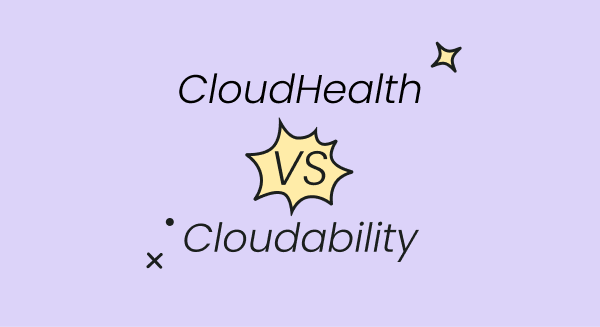
Visibility is the foundation of every FinOps process and the starting point covered in the inform phase of the FinOps framework. Knowing who is spending what, where, and why is essential to understanding spending patterns and establishing financial accountability within an organization. But how exactly do we gain this visibility? Through cloud cost allocation!
Cloud cost allocation involves assigning cloud expenses to the relevant teams, projects, or business units, allowing organizations to track and manage their spending more effectively.
Read on to discover the basics, benefits, and types of cloud cost allocation methods and learn how they can transform your approach to cloud cost management.
What is Cloud Cost Allocation?
Cloud cost allocation is the process of systematically assigning cloud costs to the specific teams, departments, projects, or business units that incurred them. It covers the three major aspects of cloud visibility: who, what, and where.
At its core, cloud cost allocation allows organizations to break down their cloud costs, identifying which areas of the business are driving spending. By doing so, companies can analyze spending patterns, make informed decisions, and optimize their cloud investments to align with business objectives. Most importantly, cloud cost allocation helps in establishing cloud financial accountability by ensuring that each team or department is responsible for its own spending, leading to more mindful usage and efficient resource management.
Effective cloud cost allocation relies on accurate data collection and the implementation of tagging and labeling practices within cloud environments. These practices enable businesses to attribute costs to specific projects or teams, facilitating better budgeting, forecasting, and resource management.
Explore our detailed blog on AWS Cost Allocation Tags.
What are the Benefits of Cloud Cost Allocation?
Implementing cloud cost allocation offers several significant benefits that enhance the financial and operational efficiency of an organization, here are the primary ones:
-
Enhanced Cost Visibility
Cloud cost allocation provides organizations with detailed insights into their cloud spending by categorizing costs according to teams, projects, or departments. This enhanced visibility allows businesses to identify spending patterns, track cost drivers, and uncover hidden costs, ensuring transparency and informed financial oversight.
- Improved Financial Accountability
By associating cloud costs with specific teams or projects, organizations can promote accountability and ownership over resource usage. This practice encourages teams to be more mindful of their consumption, leading to the more efficient utilization of cloud resources and fostering a culture of responsibility.
- Budgeting and Forecasting
With precise allocation of cloud costs, businesses can develop more accurate budgets and forecasts. Understanding which areas incur the most costs allows organizations to allocate resources effectively and anticipate future spending needs, aiding in strategic financial planning and avoiding unexpected budget overruns.
- Cost Optimization
Cloud cost allocation helps identify areas where resources may be underutilized or overspent. By highlighting inefficiencies, organizations can take targeted actions to optimize their cloud investments, such as rightsizing resources or optimizing commitment plans or renegotiating volume discount contracts. It ultimately helps in reducing waste and maximizing the business value derived from cloud services.
- Informed Decision Making
Access to detailed data enables organizations to make better-informed decisions about their cloud strategies. With a clear understanding of where money is being spent and why, businesses can align their cloud usage with broader objectives, prioritize investments, and support innovation without sacrificing financial control.
How to Allocate Cloud Costs?
Allocating cloud costs effectively requires a structured approach to ensure accurate tracking and accountability. Here are some key methods used to allocate cloud costs:
1. Tagging
Tagging involves assigning metadata labels to cloud resources, such as virtual machines, storage buckets, or databases. These tags can include information like the project name, department, cost center, or environment (e.g., development, testing, production). By implementing a consistent and comprehensive tagging strategy, organizations can categorize and track cloud costs with precision.
Implementation:
- Define a Tagging Policy: Establish a standardized set of tags that reflect organizational structure and business needs.
- Automate Tagging: Use automated tagging tools and scripts to apply tags consistently across all resources.
- Regular Audits: Conduct regular audits to ensure tags are applied correctly and consistently.
Effective tagging provides detailed insights into cloud spending, enabling organizations to identify cost drivers, optimize resource usage, and facilitate more accurate billing and reporting.
2. Showback
IT Showback is a financial model in which cloud usage and associated costs are tracked and reported back to the respective teams or departments without directly charging them. This approach provides transparency into consumption patterns and encourages teams to be more cautious of their cloud usage.
Implementation:
- Collect Usage Data: Gather detailed usage and cost data from cloud service providers.
- Generate Reports: Create Showback reports that break down costs by team, project, or department.
- Review and Educate: Share reports with teams regularly and educate them on their cloud consumption patterns.
Showback fosters a culture of accountability by highlighting areas of inefficiency, ultimately leading to cost savings and better resource management.
3. Chargeback
Chargeback extends the showback model by directly billing the responsible teams or departments for their respective cloud usage. This method creates a direct financial incentive for teams to manage their cloud resources efficiently and align their spending with organizational goals.
Implementation:
- Set Up Billing Mechanisms: Establish systems to allocate costs based on actual usage and predefined rates.
- Communicate Cost Structures: Clearly communicate cost structures and billing policies to all teams.
- Monitor and Adjust: Continuously monitor usage patterns and adjust cost allocations as needed.
This approach encourages teams to optimize their cloud usage, control costs, and contribute to the organization’s overall financial objectives.
Best Practices for Cloud Cost Allocation
Implementing best practices for cloud cost allocation can significantly enhance the accuracy and effectiveness of cost management. Here are some key practices to consider:
Implement a Consistent Tagging Strategy
Ensure that tags are standardized and applied uniformly across all resources, facilitating easy categorization and retrieval of cost data. Use automation tools to reduce the risk of human error and establish clear naming conventions to maintain consistency and avoid confusion.
Regularly Review and Update Tags
Regularly reviewing and updating tags is essential to maintaining the integrity of cost data. Conduct periodic audits to verify that tags are applied correctly. Adjust them to reflect changes in organizational structure or project priorities. Removing unused or outdated tags helps prevent clutter and ensures that cost allocations remain accurate.
Use Detailed Cost Allocation Reports
Utilize detailed cost allocation reports to gain valuable insights into cloud spending patterns and identify optimization opportunities. Leverage built-in tools from cloud providers to generate customized reports that meet specific business needs. Analyzing cost trends regularly can help highlight potential areas for cost savings and improve financial planning.
Adopt a Multi-Level Allocation Approach
Adopting a multi-level allocation approach involves categorizing costs at various levels, such as department, project, and resource type, to provide a comprehensive view of cloud spending. Implement hierarchical tagging or account structures to organize costs effectively and allocate indirect costs appropriately to ensure a complete picture of resource usage.
Educate Teams and Enforce Allocation Policies
Conduct training sessions to ensure all team members understand tagging and allocation practices. Set clear guidelines and regularly monitor compliance to address any issues promptly, fostering a culture of financial accountability and efficient resource management.
How can Finout Help With Cloud Cost Allocation?
Finout leverages its advanced 'Virtual Tagging' feature to enhance cloud cost allocation by enabling on-the-fly tagging of resources. This allows for precise tracking and categorization of cloud expenses without requiring changes to existing tags or infrastructure. Users can dynamically assign costs to specific projects, teams, or departments, ensuring accurate and detailed financial reporting.
Benefits and Efficiency
By utilizing Finout's platform, organizations can achieve granular visibility into their cloud spending. The system integrates seamlessly with various cloud providers, offering real-time insights and automated cost distribution. This results in improved budget management, identification of cost-saving opportunities, and the ability to allocate costs more effectively across the organization.








